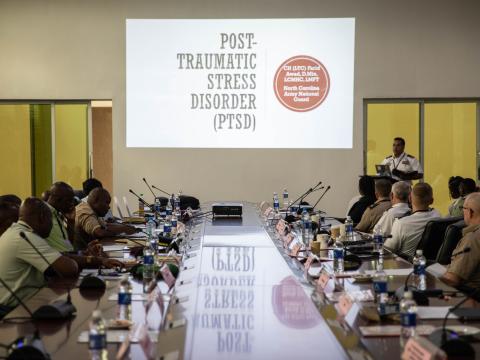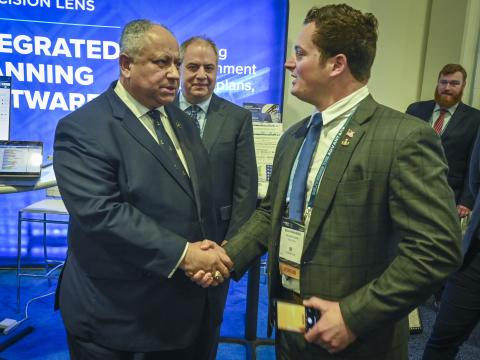Change Is Challenge
Homeland Security Conference 2013 Show Daily, Day 3
Although many in government are moving as quickly as possible to adopt new technologies, such as cloud computing and mobile devices, individual agencies still face cultural challenges that sometimes prevent them from moving forward, according to officials speaking as part of the Chief Information Officer Council at the AFCEA Homeland Security conference in Washington, D.C.
Richard Spires, chief information officer for the Homeland Security Department (DHS), reminded the audience that DHS was created by joining a lot of disparate agencies, all of whom owned individual networks. While the department is working to integrate the information technology infrastructure and consolidate data centers, officials still meet some resistance at the individual agency level. “There’s still have lot of duplication and in some ways duplication is holding us back. I’d like to say we’re making progress, but I’ll let others grade us on that,” Spires said.
Other officials agreed that they meet resistance as well. Robert Carey, deputy chief information officer for the Defense Department cited a culture of change and said a constrained budget environment can be a power catalyst for action in moving toward a more centralized environment.
Cybersecurity itself can present challenges, according to Luke McCormack, chief information officer for the Justice Department. “Cyber’s hard. The individual pieces of that can be very difficult,” he said. He also cited the need to bring people together on emerging technologies, such as cloud-as-a-service, as a challenging issue.
Sandy Peavy, chief information officer for the Federal Law Enforcement Training Center within DHS reported that she also has witnessed difficulties in bringing the department’s disparate communities together. Her office needs to meet the needs of a variety of law enforcement agencies with different missions, including the Customs and Border Protection and the Secret Service. “We need to reach an understanding about what mobile can do for us when we’re doing law enforcement training, Peavy said.
The CIO Counsel was the final panel on the third and final day of the conference. Peavy also served on the Training, Modeling and Simulation panel earlier in the day and urged industry to seek solutions for providing training and simulation via mobile devices.
She also told the audience that her office trains personnel from 76,000 students a year from 92 organizations, and they rely heavily on simulation to do so. The office currently uses 60 simulators and is building a 72-lane simulated firing range. Science shows that simulated training helps law enforcement professionals to qualify more easily on the life fire range and will save money on the 17 million rounds of ammunition the department currently uses each year. More importantly, she says, simulation is critical to mission performance and officer safety. “In a crisis situation, these guys will always, always, fall back on their training,” she said.
Another modeling and simulation panelist said the technology can be instrumental in improving interoperability for emergency responders. David Boyd, director of the office of interoperability and compatibility within DHS said government officials face a major challenge when working with emergency responders at the local level. Those local officials will be involved 87 percent of critical issues, while state officials will be involved in 11 percent, federal officials in only two percent.
Because those local officials are more experienced, federal government personnel need to tread carefully when trying to convince them to make changes. If improving interoperability means that local agencies will have to abandon bought-and-paid for equipment, they will not do it. But in one case, Boyd’s office was able to use simulation to model interoperability improvements that could be made while allowing local and state agencies to keep the equipment they already had, which made the difference in convincing agencies to change.
The final day of the conference started with Rand Beers, Under Secretary for the National Protection and Programs Directorate at DHS. Beers discussed a variety of challenges to protecting the nation’s cyber and physical infrastructure, which he part and parcel of the same strategy, rather than two distinct efforts.
One challenge on the cyber front is improving cooperation between the government and private sectors, according to Beers and others who have spoken at the conference. Privacy concerns present one hurdle, but also, many in the private sector are resistant to make the changes government officials recommend.
Beers reported concerns that the government will dictate cybersecurity solutions to the private sector rather than allowing industry the flexibility to innovate and implement their own solutions. The administration considered those concerns while drafting the recent executive order on cyber and the president directive on infrastructure protection, he said. “That process, quite frankly, evolved into what all of us within the administration have come to believe is a far better solution, which takes into account the innovation and expertise that exists within the private sector,” he said.



